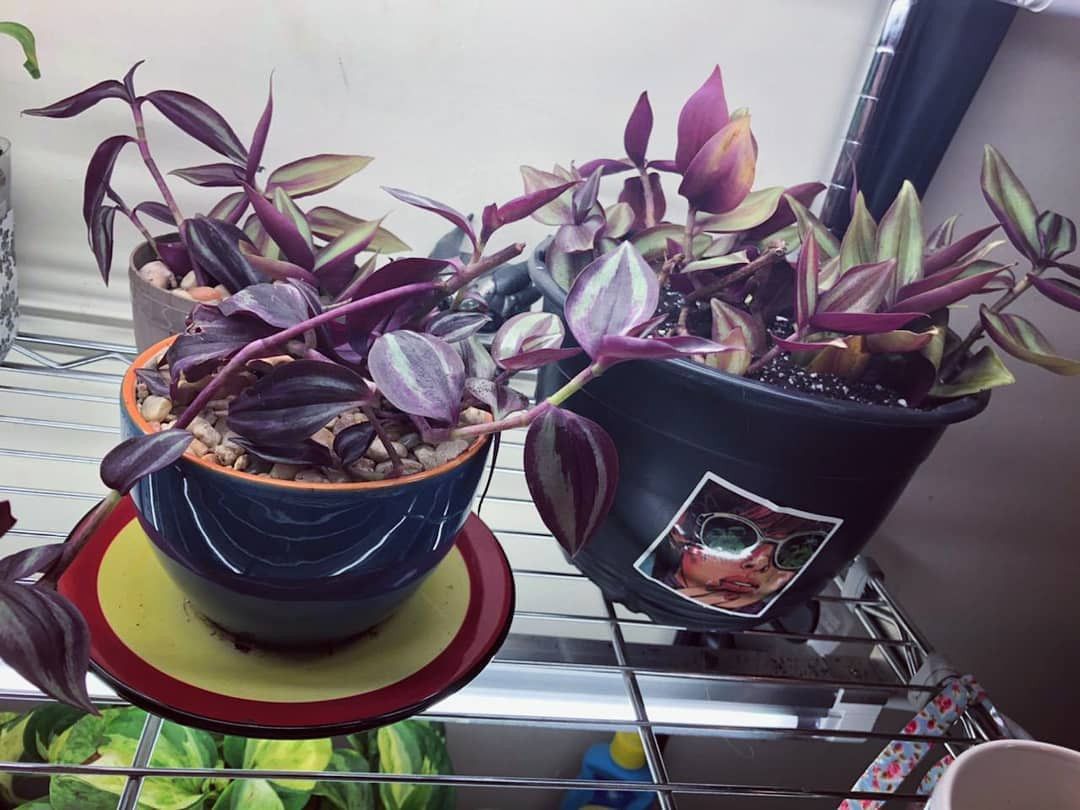Houseplant With Purple Under Leaves

Houseplant with purple under leaves
The Oyster Plant is a great houseplant with green leaves on top purple underneath. The plant is native to central and south America so if you live in a cooler climate you'll have to keep it as a houseplant but not to worry as their purple glow will add colour to any room.
What indoor plant has purple underside leaves?
9 Popular plants that are green on top and purple underneath
- Most Popular Plants that Are Green on Top and Purple Underneath. Alocasia Amazonica Polly. Oyster Plant. Hemigraphis Exotica Purple Waffle. Calathea Rattlesnake. Ctenanthe Plant. Stromanthe Sanguinea. Calathea veitchiana. Gynura Sarmentosa. Wandering Jew.
- Conclusion.
What are green striped leaves with purple underside?
Tradescantia zebrina is a herbaceous perennial often grown as a houseplant. It has interesting variegated foliage striped green, white, and gray leaves with purple undersides. The leaves are ovate and clasp the stem at the base. Tiny three-petaled lavender-purple flowers appear infrequently indoors.
Why do some plants have purple under leaves?
Purple pigments on the underside of leaves in rainforest plants help maximize light absorption through reflecting light back up int the leaf.
What is so special about purple pitcher plants?
The plants are most noted, however, for the hollow, gibbous leaves, or pitchers, that give the plant its name. The pitchers trap and digesting flying and crawling insects, making the species one of the few carnivorous plants in North America.
What does purple nightshade look like?
Leaves are dark green to purple-tinged. Mid-May to September, produces star-shaped purple flowers with stamens fused in a prominent yellow cone. Flowers followed by round or egg-shaped berries that ripen from green, to orange, to bright red. All stages of berry can grow on same plant.
What Calathea has a purple underside?
Calathea Rufibarba This Calathea variety has lance-shaped foliage that is purple and fuzzy on the underside and green on the top. Its stems are pretty long and are deep burgundy in color. It's a great pick for low-light settings.
How do you take care of a purple heart plant indoors?
Six hours of bright indirect sunlight each day while this plant can handle full sun too much
Is creeping purple heart an indoor plant?
Purple heart plants (aka purple queen) are easy to care for, and can grow both indoors or outside. In this post, I'll show you all you need to know in order to keep them thriving. The striking foliage of a purple heart plant makes it a popular choice for landscaping and growing indoors alike.
Which nutrient deficiency causes a purplish color on the underside of leaves?
Magnesium: deficiency causes whitish strips along the veins and often a purplish color on the undersides of the lower leaves. Drought: causes the com to have a grayish-green color and the leaves roll up nearly to the size of a pencil.
What is the name of the plant with purple and green leaves?
Tradescantia zebrina. Commonly called zebra plant, inch plant, silver inch plant or more recently, wandering dude, Tradescantia zebrina (=T. pendula; Zebrina pendula) is a popular houseplant in the spiderwort family (Commelinaceae) grown for its variegated foliage.
What plant has green leaves with purple edges?
Black Lace Coleus (Solenostemon 'Black Lace') is a duckfoot shade coleus with deeply incised leaves that are deep purple and edged in green. It may also be called 'Duckfoot Midnight'. It grows 12-16 inches tall.
Why is my indoor plant turning purple?
When you notice a plant with purple leaves rather than the normal green color, it is most likely due to a phosphorus deficiency. All plants need phosphorus (P) in order to create energy, sugars, and nucleic acids. Young plants are more likely to display signs of phosphorus deficiency than older plants.
Why do leaves have red undersides?
The red colour is caused by pigments called anthocyanins. The pigments cause not only the red of some leaves, grapes and onions, but also the blue of blueberries and the black of soy beans. Some trees are naturally very high in these pigments and will have strong colours at all times of the year.
Why are some leaves red underneath?
As some leaves die, they produce chemicals called anthocyanins (also found in the skin of grapes and apples) from built up sugars. These chemicals produce a red pigment that can combine with green pigments left from chlorophyll and display different shades of red.
How rare is a pitcher plant?
STATUS Thirty-five Nepenthes species are listed as vulnerable or endangered on the IUCN Red List, while 10 are listed as critically endangered. THREATS Overcollection and poaching for the rare plant trade; habitat destruction due to agriculture and human development; and drought caused by climate change.
Is pitcher plant harmful to humans?
Pitcher plants are not toxic to pets or humans so you can safely keep the plants in your home.
How hard is it to keep a pitcher plant alive?
Caring for pitcher plants is minimal. The best temperature for pitcher plants that are grown inside is between 60 and 70 F. (16-21 C.). Indoor plants should be fertilized at the start of the growing season with a good orchid food and every month until fall.
What happens if you touch nightshade?
This plant is not dangerous to touch, but do make sure you wash your hands thoroughly if you've handled it to avoid ingesting the toxins that remain on your hands.
What does belladonna look like?
Brown or brown-purple bell-shaped flowers (with four yellow stamens inside). Large berries: 1.5-2 cm in diameter (the size of a small cherry), which is green first and then turns glistening black. The berries have a green, five-lobed (sometimes with shading) "foot", which looks like a star.










Post a Comment for "Houseplant With Purple Under Leaves "